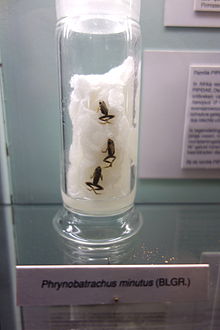7 아리에티스
7 Arietis| 관측 데이터 에폭 J2000 이쿼녹스 J2000 | |
|---|---|
| 별자리 | 양자리 |
| 우측 상승 | 01h 55m 51.03905s[1] |
| 탈위임 | +23° 34′ 38.3509″[1] |
| 겉보기 크기 (V) | 5.76[2] |
| 특성. | |
| 스펙트럼형 | K1 III[3] |
| U-B색지수 | +1.04[4] |
| B-V색지수 | +1.185[4] |
| 변수형 | 2진수 입력[5] |
| 아스트로메트리 | |
| 방사 속도 (Rv) | +15.95km[6]/s |
| 고유 운동 (μ) | RA: +11.050[1]mas/yr Dec.: -9.513마스[1]/yr |
| 시차 (π) | 5.3941 ± 0.1720[1] 마스 |
| 거리 | 600 ± 20 리 (105 ± 6 pc) |
| 세부 사항 | |
| 반지름 | 25.0+0.9 −1.4[1] R☉ |
| 루미도 | 231.3±8.5[1] L☉ |
| 온도 | 4500+130 −78[1] K |
| 회전 속도 (v sin i) | 1.8±1.0km[7]/s |
| 기타 지정 | |
| 데이터베이스 참조 | |
| 심바드 | 자료 |
7 아리에티스(Arietis)는 양자리 북쪽 별자리에 있는 이항성계통이다[3]. 7 아리에티스(Arietis)는 플램스티드(Plamsteed) 명칭이다.이 쌍은 외관상 5.76의 외관상으로 어두운 교외 하늘에서 육안으로 희미하게 볼 수 있다.[2]연간 시차 변화량 5.39 mas에 근거하여,[1] 지구로부터 약 600광년(180파섹) 떨어져 있으며, 30광년의 오차범위를 주거나 한다.그것은 반경 +16 km/s의 속도로 태양으로부터 더 멀리 떠내려가고 있다.[6]
이것은 47.9일의 기간으로 에클립싱 바이너리 시스템으로 나열되며, 변수별 명칭인 RR Arietis가 있다.일차 항성의 각 일식 동안, 시스템의 크기는 0.40만큼 감소한다.2차 월식은 그 크기를 0.35까지 감소시킨다.[5]이 체계의 주요 성분은 K1 III의 별 분류를 가진 진화된 거대 항성이다.[3]태양 크기의 약 25배에 달하며 광구에서 태양 광도의 231배인 4,500K의 유효 온도로 방사하고 있다.[1]
이 별의 모호한 이항성은 이탈리아 천문학자 엔니오 포레티에 의해 논란이 되어왔다.[8]트리스탐 브렐스태프의 영국천문협회 은닉 이진 프로그램의 일환으로 이루어진 관찰도 일식을 확인할 수 없었다.[9]
참조
- ^ a b c d e f g h i j Brown, A. G. A.; et al. (Gaia collaboration) (August 2018). "Gaia Data Release 2: Summary of the contents and survey properties". Astronomy & Astrophysics. 616. A1. arXiv:1804.09365. Bibcode:2018A&A...616A...1G. doi:10.1051/0004-6361/201833051.이 소스에 대한 가이아 DR2 기록 VizieR.
- ^ a b Richichi, A.; Percheron, I.; Khristoforova, M. (February 2005), "CHARM2: An updated Catalog of High Angular Resolution Measurements", Astronomy and Astrophysics, 431 (2): 773–777, Bibcode:2005A&A...431..773R, doi:10.1051/0004-6361:20042039.
- ^ a b c Eggleton, P. P.; Tokovinin, A. A. (September 2008), "A catalogue of multiplicity among bright stellar systems", Monthly Notices of the Royal Astronomical Society, 389 (2): 869–879, arXiv:0806.2878, Bibcode:2008MNRAS.389..869E, doi:10.1111/j.1365-2966.2008.13596.x, S2CID 14878976.
- ^ a b c "7 Ari". SIMBAD. Centre de données astronomiques de Strasbourg. Retrieved 2012-07-18.
- ^ a b Malkov, O. Yu.; et al. (February 2006), "A catalogue of eclipsing variables", Astronomy and Astrophysics, 446 (2): 785–789, Bibcode:2006A&A...446..785M, doi:10.1051/0004-6361:20053137.
- ^ a b Famaey, B.; et al. (January 2005), "Local kinematics of K and M giants from CORAVEL/Hipparcos/Tycho-2 data. Revisiting the concept of superclusters", Astronomy and Astrophysics, 430 (1): 165–186, arXiv:astro-ph/0409579, Bibcode:2005A&A...430..165F, doi:10.1051/0004-6361:20041272, S2CID 17804304.
- ^ De Medeiros, J. R.; et al. (November 2002), "A catalog of rotational and radial velocities for evolved stars. II. Ib supergiant stars", Astronomy and Astrophysics, 395: 97–98, arXiv:1312.3474, Bibcode:2002A&A...395...97D, doi:10.1051/0004-6361:20021214.
- ^ Poretti, Ennio (1984). "RR Ari: Not a variable star". Astrophysics and Space Science. 106: 201–203. Bibcode:1984Ap&SS.106..201P. doi:10.1007/BF00653927. S2CID 120037068.
- ^ Isles, J. E. (1985). "Eclipsing Binaries, Andromeda To Camelopardalis, in 1972-1983". Journal of the British Astronomical Association. 96: 27–32. Bibcode:1985JBAA...96...27I.


